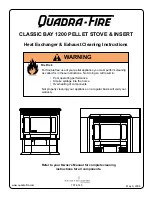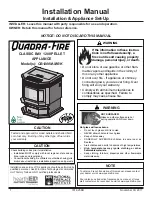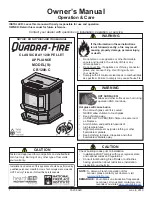
Jidé s.a. – Rue des Meuneries 11 – B-4650 HERVE (Belgique) – Tél. +32 87 31.75.12 – Fax +32 87 31.75.11 –
Modul-ART (EN) June 2018
5
-
Too strong draught does not permit to gain a sufficient temperature for a good
combustion.
-
Weak draught leads to risk of backdraft, dirt on the glass and in the chimney.
Consult a qualified chimney sweep for each question concerning a good use and maintenance
of the chimney.
General recommendations
We advise against reducing highly the working of the stove (ventilator speed too slow) until
there is no more flame, evidence of bad combustion. Unburned gas turn into soot.
Likewise, an overloaded stove will not bring you more comfort but will lead to less efficiency,
a useless increase of wood consumption, a loss of warmth and an abnormal wear of the
stove.
Some climatic conditions may impact on the combustion and the draught of the chimney
(strong wind, fog).
When removing ash, be careful with remaining embers!
During the fire, the door must be closed.
Do NEVER use flammable liquids (ex: methanol) to light or revive the fire!
Wood
– Choice and use
Jidé fireplaces are designed to burn hard wood logs only.
The quality of the wood is important.
“Green” wood contains a lot of water (approx. 50 %).
“Dry” wood, kept outside for 18 to 24 months and well ventilated, still contains 15 % water.
Damp wood is more difficult to consume, presents a lower calorific power and pollutes the
environment.
Damp smoke has disadvantages, for example a reduced draft and the formation of tar in the
flue and on cold surfaces (the window for example).
Split wood will give a best combustion and will improve the working of your stove.
Wood calorific value depends on the kind of wood, and its volume for a same quantity of
warmth is different according to this choice. Therefore, "hard" wood like beech and oak, with
a huge density, will need less quantity than other kinds with less density.


































